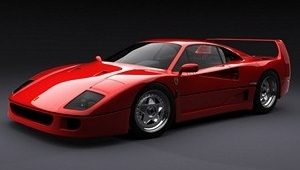
456 GT Venice
1996
Vehicle type
Motor type
Gearbox type
GT
F116
Motor
Displacement
Arrangement
V12
5.5 L
front
Power
0-100
Max speed
442 ch
5.2 s
300 km/h
In the fantasy department, the Sultan of Brunei has ordered two ‘special’ 456 GTs from Pininfarina, named Venice. These were convertible and saloon versions of the 456 GT. But that wasn’t enough for him, so he also asked for a version called Estate, which is none other than… a station wagon. These models were invoiced to him at $1,500,000 each and entrusted to Italtecnica for production in 1995 and 1996. A total of 4 shooting wagons were assembled, as well as at least three convertibles and several saloons. Prince Jeffrey only bought 6 cars, the others ending up in the private collections of wealthy collectors.
CONSUMPTION
20.0 L/100kms
LENGTH
4730 cm
TRANSMISSION
rear-wheel drive
WIDTH
1920 cm
RESERVOIR
110 L
HEIGHT
1300 cm
BOOT VOLUME
/ L
WEIGHT
/ kg









